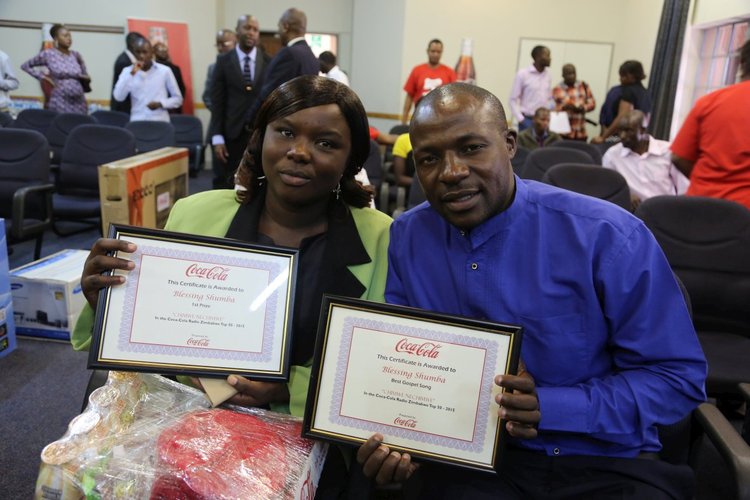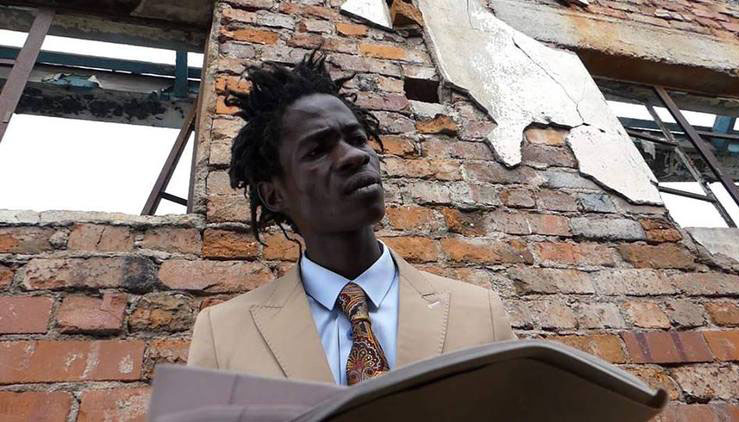
The Sunday Mail

Takudzwa Chihambakwe
IN the United States of America (USA) and other developed countries when an artiste tops Billboard Charts it is a very big deal.
This translates to more sales on online stores such as iTunes, more views on YouTube meaning revenue generated through adverts, higher chances to get endorsements and ultimately more shows and money.
Come to Zimbabwe and the situation proves to be rather weird. Coming out tops on the radio or television music and video chart shows does not necessarily mean that an artiste’s career path changes. In fact, it appears to be just a fame contest that translates into nothing.
The 2017 end of year chart shows on most local radio stations reveal that no one artiste or genre rules the music scene as was the case during the peak days of Thomas Mapfumo, Simon Chimbetu, Leonard Zhakata or Alick Macheso.
This year – after the votes were counted the following artistes topped the charts; Radio Zimbabwe was ruled by Blessing Shumba, Star FM belonged to Ammara Brown for a second year running, Power FM’s king was Soul Jah Love and National FM’s winner was little known James Chawaika.
However, when it comes to reality on the ground, all these winning artistes have nothing compared to two of the most sought-after artistes in the country, Winky D and Jah Prayzah. The two have not come out tops on the charts in the past two years but they still have more clout and ultimately get more gigs and endorsements.
It is baffling! What then is the essence of these chart shows?
For instance, Jah Prayzah in 2016 was at number 20 on Radio Zimbabwe, 34 on Power FM, 24 on National FM and 15 on Star FM. These dismal positions did not affect his grind at all. In fact, he became more dominant while the likes of Leonard Zhakata, who came out tops with three songs on the Radio Zimbabwe charts, faded into obscurity.
In 2017 his positions were still bad, position four on National FM, 52 on Power FM, 45 on Radio Zimbabwe and seven on Star FM. However, this does not mean Blessing Shumba, James Chawaika, Soul Jah Love and Ammara Brown will get more gigs than him in 2018 as they came out tops on radio charts.
Just as confusing as the radio charts are the videos. The misfiring Winky D of 2017 whose three singles flopped was redeemed by the annual Coca-Cola ZBC top 50, which saw his two videos “Rugare” and “My Woman” coming out on position one and two respectively.
On YouTube, Winky D’s videos are all below a million views whilst all Jah Prayzah’s videos from 2017 have hit a million plus views except for “Chengetedza”.
One would have thought that Jah Prayzah would bag the top slot on ZTV as was the case last year when he had more views on YouTube with “Watora Mari” but well, maybe his fans did not vote.
Moving on, an interesting trend we picked from the results is that each station is dominated by the same acts. Blessing Shumba has in recent years always been coming out in the top five of the Radio Zimbabwe Top 50 so there is no need for people to get shocked when he comes out on position one and two.
Those that listen to the station know that the sooner a song enters the weekly chart show and dominates, the higher the probability of it winning regardless of what comes out from the votes in December.
Hence the reason why a record 130 people managed to predict the Radio Zimbabwe top 5 this year and 3 364 managed to predict Shumba’s winning song, “Changa Chajaira”.
Ammara Brown also maintained dominance on Star FM because the listeners love her flair. Secondly, dancehall is no longer the genre of choice in Zimbabwe. Had it not been for Soul Jah Love’s “Pamamonya Ipapo”, it would have been a disastrous year for dancehall as the other top chanters failed to turn up to the party. New kids on the block, Blot and Jah Signal failed to rise to the occasion and they became just but average acts as the year unfolded.
The genre’s problems were summed up by the appalling 2017 Zim dancehall Awards, which were snubbed by senior artistes.
Thirdly, the results show that sungura has a robust fan base. The likes of Gift Amuli, Lucky Kumene and Peter Moyo also found themselves on the charts on most radio stations. This indicates that although few promoters invest in sungura, the masses still love it.
Lastly, Zim hip-hop is still dead and awaits probably the second coming of Christ to be resur- rected.
Overall, 2017 saw the Zimbabwean music sector hit a glass ceiling, resulting in many genres and artistes being checked into ICU. Many albums were released in the year but 95 percent of them failed to make an impact on the market. The Jah Prayzah and Winky D combination still remained the most profitable venture for promoters, though it increased monotony at shows.
Going forward; should Zimbabwean artistes really bother about begging for votes to top charts on various social media platforms from their fans or just take a chill pill and focus more on producing content that people love? Have radio stations lost their power in terms of influencing things?
So again we ask; do these music charts mean anything?






